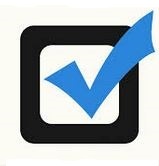Schedule J: Income Averaging for Farmers and Fishermen
Tax Preparation Checklist
IRS Schedule J Income averaging for farmers and fishermen offers taxpayers an opportunity to balance an income tax burden over several years, reducing the effects of both bountiful and lean income years.
Internal Revenue Service Form Schedule J is used to help taxpayers average their fishing or farming income fluctuation.
General considerations that should be addressed prior to preparing your schedule J tax form:
 When
is income averaging a beneficial tool for farming and fishing occupation taxpayers?
When
is income averaging a beneficial tool for farming and fishing occupation taxpayers?
Income averaging is a good tax advantage to consider if your income from fishing and farming activities for the current tax year happens to be substantially higher or lower than your income sources over the previous three years.
Schedule J will allow you to average your income and balance your current tax bracket with previous year taxes.
 Income Averaging
for Farmers and Fishermen
Income Averaging
for Farmers and Fishermen
Averaging income allows taxpayers to avoid being taxed at a significantly higher rate in the current year. Income from the three previous years, "referred to as the base years", can be from any income source.
Which Farming Businesses Can Qualify for Income Averaging?
- The trade of cultivating land
- The raising or harvesting of any agricultural or horticultural commodity:
- excludes buying and reselling plants or animals raised by others,
- excludes the harvesting under contract of agricultural or horticultural commodities grown by someone else.
- Leasing land to a tenant engaged in farming is allowed for income averaging, provided lease payments are based on a share of the tenant's production, rather than a fixed fee. This agreement must be in place prior the tenant beginning farming operations.
Which Fishing Businesses Can Qualify for Income Averaging?
The catching, taking or harvesting of finfish, mollusks, crustaceans, marine animal and plant life. Qualified fishing businesses do not include harvesting of marine mammals and birds. Who qualifies?
- Crew members on commercial fishing vessels qualify if their income is based on a share of the catch not a wage.
- If you own a fishing boat and lease it, you are eligible for income averaging if lease arrangements are made as a share of the catch.
- If you were involved in settlement from Exxon Valdez litigation as a plaintiff or beneficiary, you may qualify for fishing income averaging.
Using elected farm income with Schedule J
You're not required to use all income from the current year of your farm and fishing for income averaging. It may be more beneficial to use a smaller portion. The portion of your income you include is called elected farm income.
It is entered on Schedule J, and it can include crops, or a loss from the sale of property and assets used in your business. It may NOT exceed your taxable income that is reported on line 43 of Form 1040.
The IRS Schedule J Form and its instructions guide will walk you through the calculation of taxes on your current year elected farm income along with the three base years to calculate your averaged income.
Schedule J (Form 1040) Department of the Treasury, Internal Revenue Service
Documentation Required for Schedule J
- Name(s) shown on return for taxpayers
- Social security number (SSN)
- Taxable income for tax year being filed
- Elected farm income (see Schedule J instructions)
- Capital gains and excess, if any, of net long-term capital gain over net short-term capital loss
- Un-recaptured gain
- Taxable income from your previous Form 1040
If you used Schedule J to figure your previous years tax:
- You need the amount from your previous Schedule J
- Otherwise, enter the tax from your two year old return
Only include tax that is imposed by section 1 of the Internal Revenue Code. Do not include alternative minimum tax from Form 1040A.
Caution: Your tax may be less if you figure it using the previous year Tax Table, Tax Computation Worksheet, Qualified Dividends and Capital Gain Tax Worksheet, or Schedule D Tax Worksheet. Attach Schedule J only if it is being used to determine your taxes.
To calculate your elected farm income, you would first compute your taxable income from farming or fishing. This would include all income, gains, losses, and deductions derived from any farming or fishing business. To the extent that the one-half of self-employment tax deduction is related to your farming or fishing business, it would be included.
The sale or other disposition of land would Not be an included gain.
Your income, gains, losses, and deductions from farming or fishing as reported on various tax forms supports the calculations.
These schedule J support tax forms can include:
Schedule C, Schedule D, Schedule E, Schedule F, Form 4797, Form 4835, and Form 1040-line 7 for income received as a shareholder in an S corporation taking part in a farming or fishing business.

